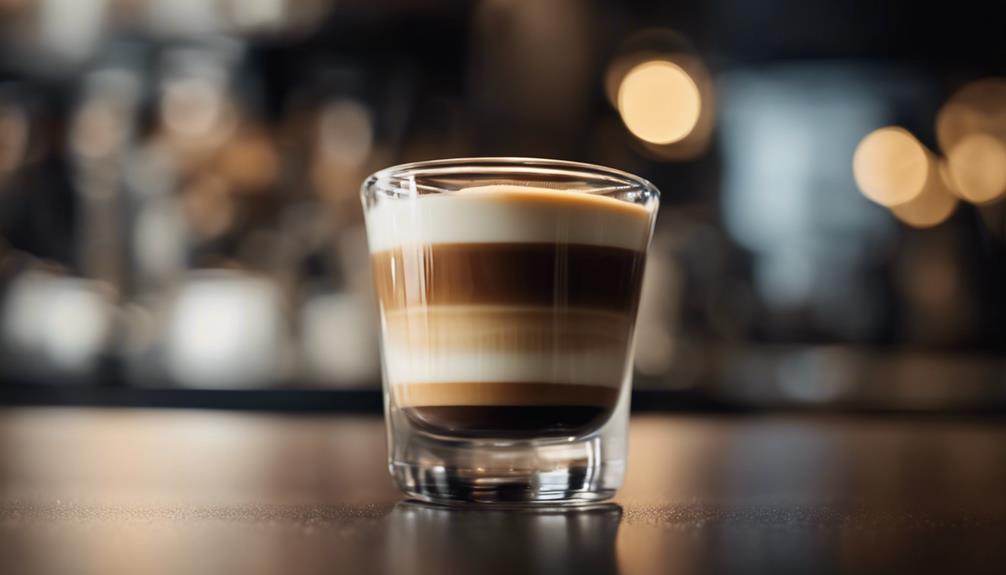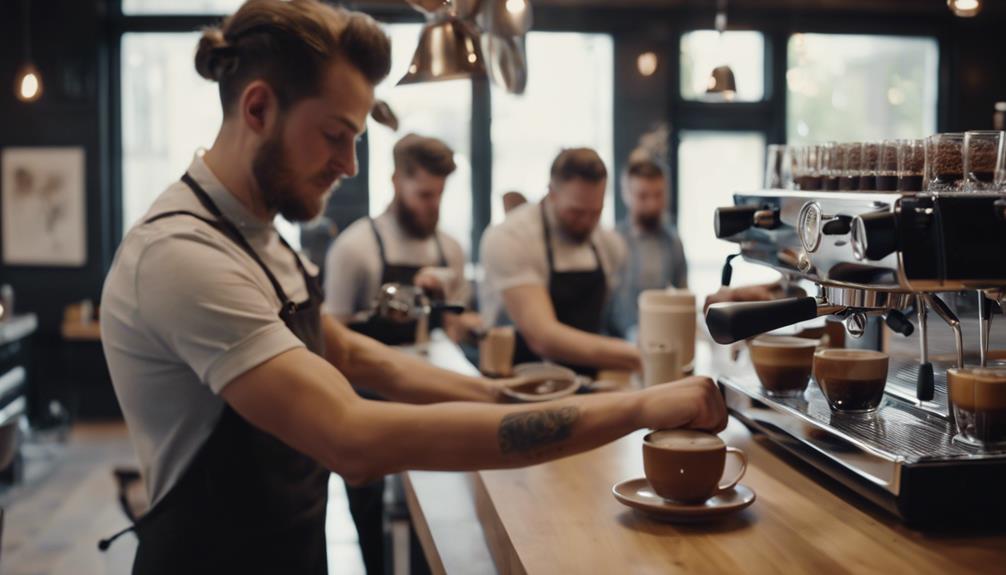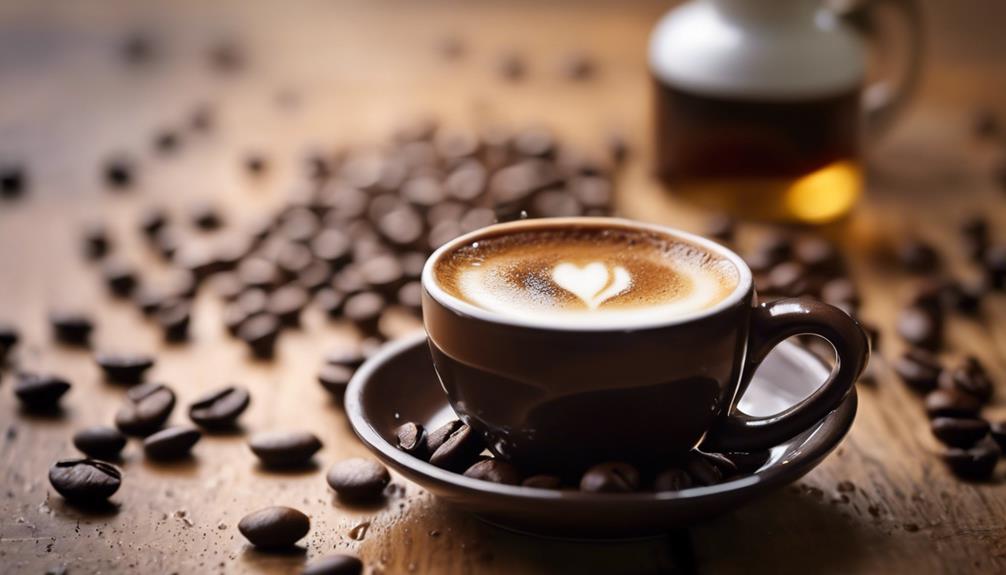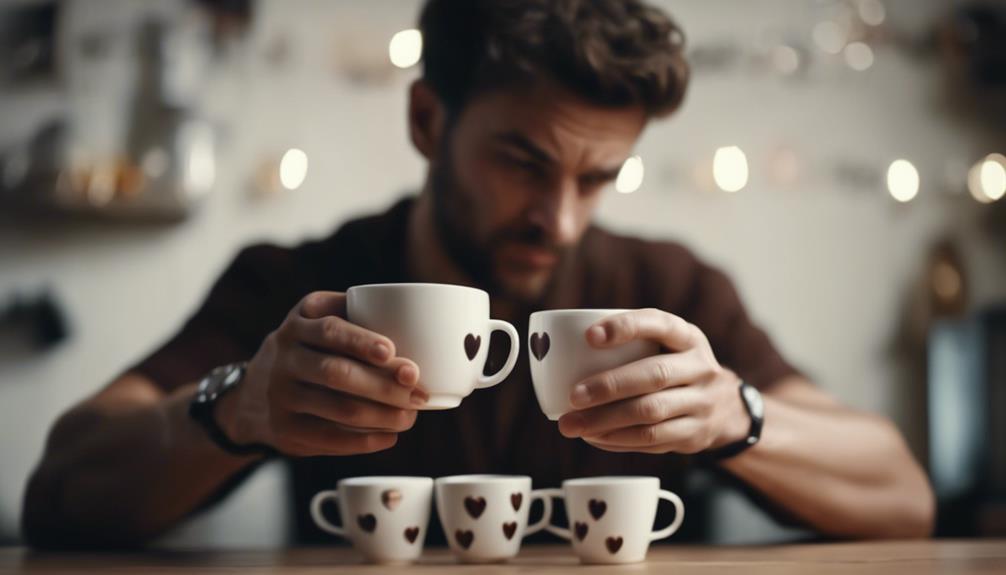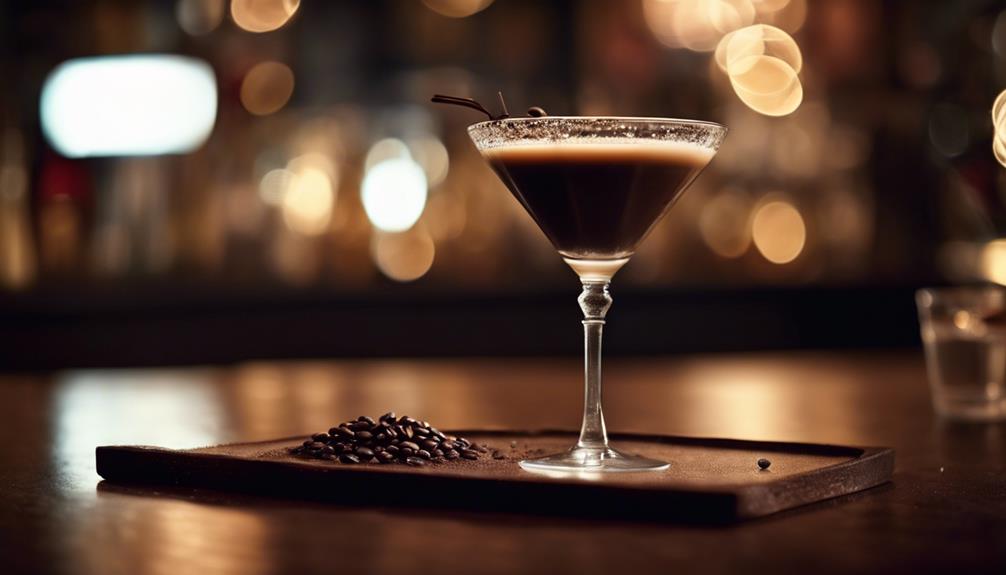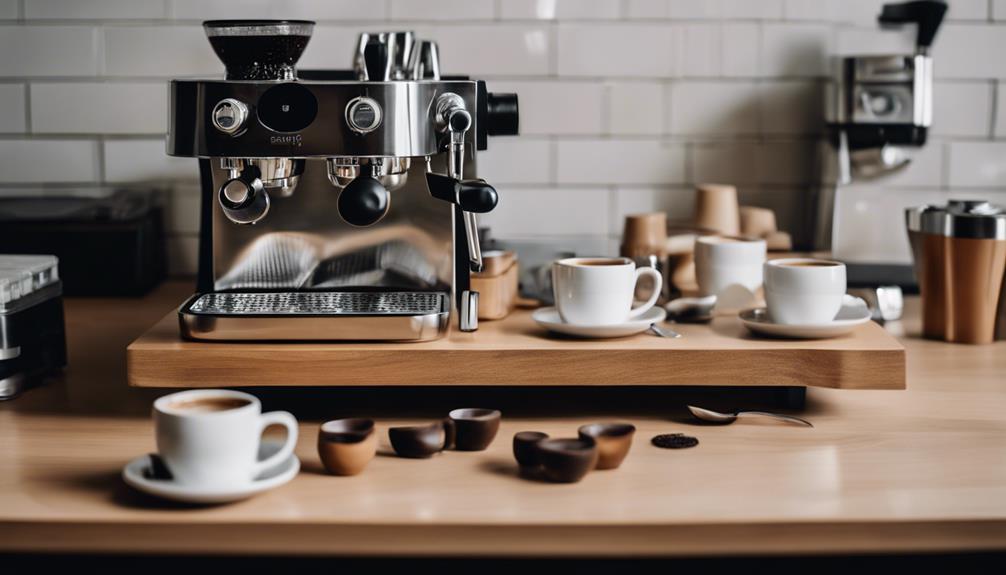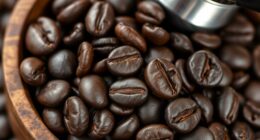Explore the unique characteristics of an inverted espresso shot. Enjoy a velvety texture and rich flavor as smooth milk serves as the foundation for the harmonious espresso flavors. Savor the smooth base and strong contrast in every sip, providing depth and complexity. Discover a reverse layering technique that enhances the flavor profile, resulting in a distinctive tasting experience. Embrace the non-traditional order of ingredients for a well-balanced caffeine kick. Dive into the bold aromatic notes that distinguish it from regular espresso shots. These qualities promise a rich and dynamic coffee experience that layers flavors to enhance your coffee enjoyment and elevate your coffee experience in the world of coffee.
Key Takeaways
- Experience unconventional flavor dynamics with inverted layering technique.
- Enjoy enhanced textural contrast and balanced caffeine infusion.
- Explore distinct layers for a creative coffee experience.
- Indulge in rich, bold flavors with upside-down espresso shot.
- Elevate coffee intensity with unique preparation method.
Velvety Texture and Rich Flavor
To experience the velvety texture and rich flavor of an upside-down espresso shot, start by savoring the creamy milk base poured first before the rich espresso. This unique layering technique sets the stage for a more balanced flavor profile, allowing the espresso to harmonize with the milk in a distinct way.
The velvety texture of the milk provides a smooth foundation, enhancing the overall drinking experience. As you take your first sip, notice how the rich flavor of the espresso seamlessly blends with the creamy milk, creating a delightful contrast that lingers on your palate.
The reversed order of the upside-down shot not only contributes to a more integrated taste but also allows the espresso to shine through, with its bold and robust notes standing out against the backdrop of the milk. This intricate interplay of flavors adds depth and complexity to each sip, making the upside-down espresso shot a truly unique and enjoyable beverage choice.
Reverse Layering Technique
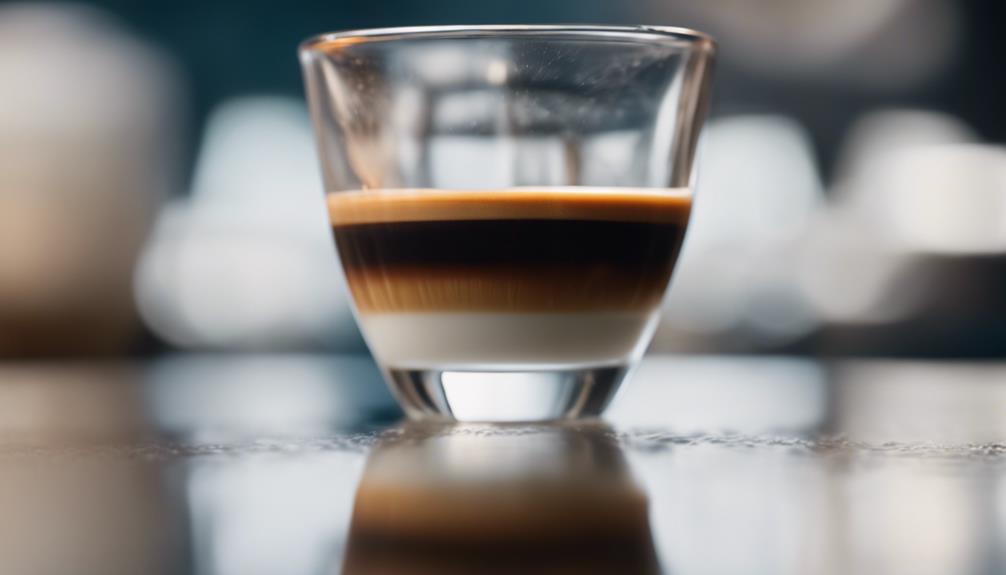
Experience a unique twist on traditional espresso preparation with the reverse layering technique of an upside-down espresso shot. When ordering an upside-down Caramel Macchiato, the layer of foam is carefully placed first, followed by the espresso poured on top, creating distinct layers that impact the overall flavor profiles of the drink. This espresso-based beverage offers a creative way to enjoy your coffee with the right amount of caffeine kick in each sip.
Here are three key points to understand about the reverse layering technique of an upside-down espresso shot:
- Flavor Dynamics: The unconventional order of ingredients in the upside-down Caramel Macchiato can lead to a different flavor experience as compared to traditional preparation methods.
- Textural Contrast: Placing the layer of foam beneath the espresso results in a unique textural contrast that enhances the overall drinking experience.
- Balanced Caffeine Infusion: The reverse layering technique guarantees that each sip contains a harmonious blend of espresso and foam, providing a balanced and satisfying caffeine boost.
Distinct Taste Experience
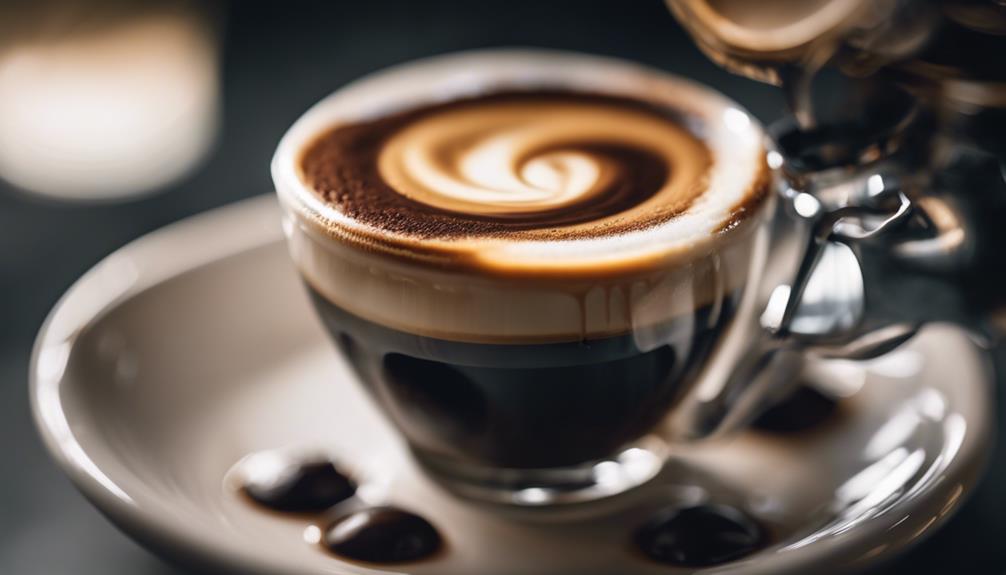
When you order an upside-down espresso shot, you can expect a rich flavor profile with bold aromatic notes.
The unique preparation method enhances the intensity of the coffee, creating a distinct taste experience that sets it apart from traditional espresso shots.
With its ability to highlight different flavor nuances, the upside-down espresso shot offers a flavorful twist for those seeking a more dynamic coffee experience.
Rich Flavor Profile
How can the flavor profile of an upside-down espresso shot be described as compared to a traditional espresso?
When you choose an upside-down espresso shot, you begin a journey of exploring a rich taste experience that differs from the conventional espresso.
Here are three key aspects that contribute to the distinctive flavor profile of an upside-down espresso shot:
- Concentrated Espresso: By reversing the layering process in an upside-down Macchiato, the espresso becomes more concentrated, intensifying its bold coffee flavor.
- Distinct Layers: The distinct layers in an upside-down espresso shot create a harmonious blend of foam and espresso, offering a multi-dimensional taste experience with each sip.
- Rich Taste Experience: Enjoying an upside-down espresso shot reveals a velvety texture and robust coffee essence that culminate in a truly indulgent and flavorful coffee experience.
Bold Aromatic Notes
Intensify your coffee experience with the bold aromatic notes of an upside-down espresso shot, creating a distinctive flavor profile that appeals to those seeking a richer coffee taste.
When the layers are inverted in an upside-down espresso shot, the bold and aromatic notes of the espresso are heightened, delivering a unique taste that accentuates the coffee's intensity.
By pouring the milk on top of the espresso in this unconventional manner, the bold and intense flavors of the coffee are emphasized, providing a flavor experience that stands out.
The distinctive aroma that arises from the reversed order of pouring adds to the complexity of the brew, enhancing the overall taste profile.
Coffee enthusiasts looking for a bolder coffee flavor will appreciate the robust and aromatic notes that shine through in an upside-down espresso shot, making it a compelling choice for those seeking a more intense coffee experience.
Smooth Espresso-Milk Blend
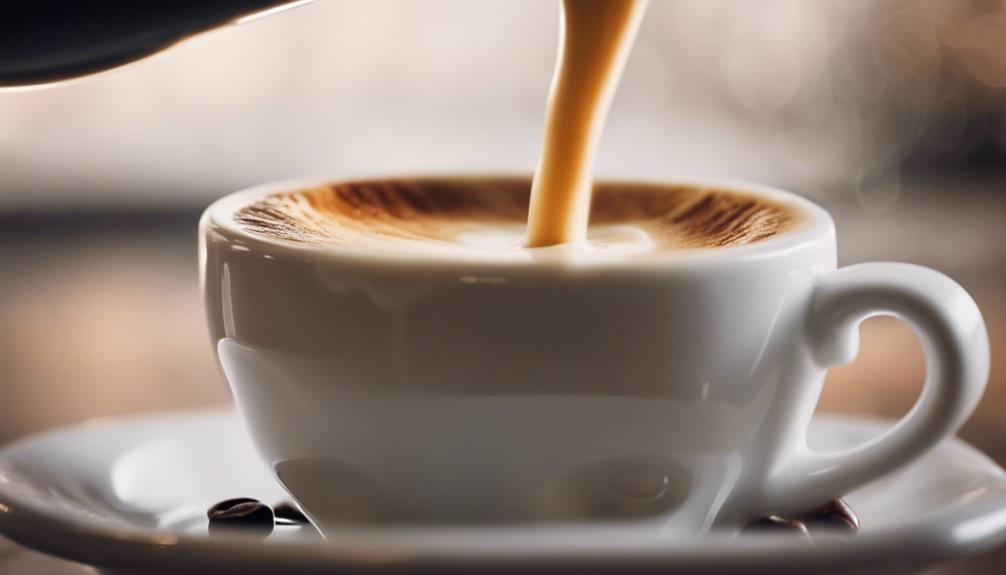
Achieving a smooth espresso-milk blend in an upside-down shot involves skillful layering techniques that enhance the overall flavor profile. When done correctly, this blend creates a harmonious fusion of espresso and milk that delights the palate.
Here's why the smooth espresso-milk blend in an upside-down shot stands out:
- Enhanced Flavor: The inverted layering method allows the milk to mix gradually with the espresso, enhancing the overall flavor profile. This results in a more balanced and complex taste experience.
- Creamy Texture: By layering the milk underneath the espresso in an upside-down shot, the final blend boasts a creamy texture that adds a velvety mouthfeel to each sip. This texture complements the robust espresso flavor, creating a luxurious drinking experience.
- Integrated Fusion: The reversed layering technique in an upside-down shot ensures that the espresso and milk mix seamlessly, providing a more integrated fusion of flavors. This unique method distinguishes upside-down espresso shots from traditional espresso-based beverages.
Complexity and Depth Added
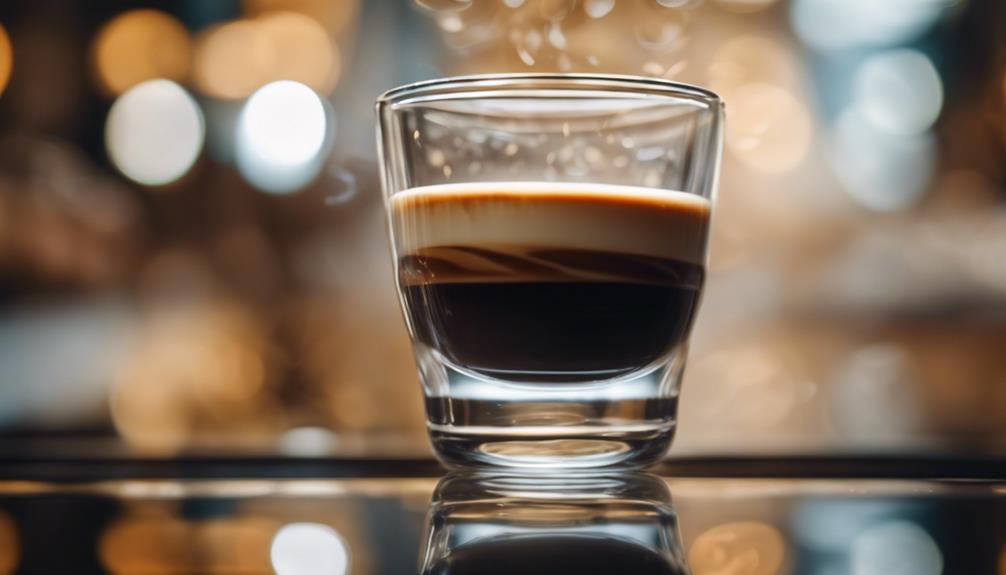
Adding complexity and depth to the flavor profile, inverting the layers of an espresso shot creates a unique and intriguing drinking experience. When you order an espresso shot upside down, you aren't only enhancing the taste of the coffee but also revealing a whole new dimension of flavors.
By rearranging the traditional layers, the complexity of the espresso shot is heightened, allowing different notes to shine through with each sip. This inversion method doesn't just impact the taste; it also enriches the overall depth of the drink, providing a richer and more satisfying experience for your palate.
Furthermore, the visually appealing aspect of an upside-down espresso shot adds to the allure of this innovative coffee preparation. The unique layering showcases a different perspective on how coffee can be enjoyed, enticing both the eyes and the taste buds.
Innovative Coffee Savoring
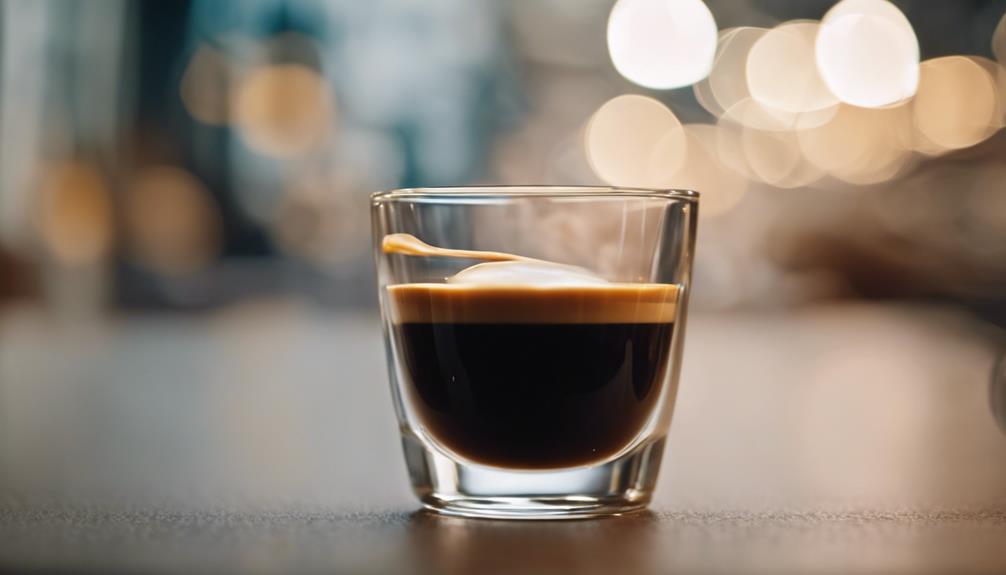
Exploring innovative ways to savor your coffee can elevate your overall coffee-drinking experience. When trying an upside-down espresso shot, you're in for a treat that goes beyond the ordinary. Here are three reasons why this unique method of preparation can enhance your coffee enjoyment:
- Altered Flavor Profile: By pouring the milk first in an upside-down espresso shot, the flavor dynamics change, offering a distinct taste experience compared to traditional methods.
- Foam Layering: In an upside-down macchiato, having the foam beneath the espresso creates a new sensation as you sip through the layers, blending the textures in a surprising way.
- Visual Appeal: Witnessing the foam at the bottom of your cup in an upside-down espresso shot not only looks intriguing but also hints at the innovative approach to coffee-making embraced by skilled baristas.
Frequently Asked Questions
What Does an Upside Down Espresso Shot?
An upside-down espresso shot at Starbucks involves pouring the milk first, followed by the espresso and foam. This unique ordering creates a different layering compared to the traditional method.
Ordering drinks like an Espresso Macchiato or Iced Caramel Macchiato upside-down also switches up the taste experience. Baristas may find making these drinks challenging due to the altered process.
What Does It Mean When a Drink Is Upside Down?
When a drink is upside down, it means the usual order of ingredients is flipped, with the final element poured first.
This reversal can create a distinctive flavor profile, especially in an upside-down espresso shot where the milk goes in first, followed by espresso and foam.
This technique can enhance the coffee's taste by changing how the milk interacts with the espresso.
Baristas might face challenges, but the result can be visually striking and flavorful.
What Does Upside Down Shots Mean?
Ordering a drink upside down means changing the usual layering sequence.
For example, in an espresso macchiato, having it upside down would place the foam beneath the espresso. This technique can offer a different flavor experience by altering the way the ingredients interact.
Baristas might find preparing upside-down shots challenging, but it can result in a unique taste profile that some customers enjoy.
What Is the Difference Between a Macchiato and an Upside Down Latte?
An upside-down latte differs from a macchiato in its layering of ingredients. The latte places milk first, then espresso and foam, offering a smoother and more integrated taste.
In contrast, a macchiato features espresso as the base with a touch of milk foam on top, resulting in a stronger coffee flavor.
Opting for an upside-down latte can provide a unique texture and flavor experience compared to a traditional latte or macchiato.
What is an Upside Down Espresso Shot and How Does It Differ from a Regular Shot?
An upside down espresso shot is made by pulling the espresso first and then adding the hot water, while a regular shot is made by adding water first and then pulling the espresso. The dunkin large americano espresso shots are perfect for enjoying the rich and bold flavor of espresso.
What Makes an Upside Down Espresso Shot Unique Compared to an Updosed Espresso Shot?
The updosed espresso shot difference lies in the brewing process. An upside-down espresso shot is unique because it is made by adding hot water to the coffee grounds first, followed by the espresso shot. This method creates a different flavor profile compared to the traditional updosed espresso shot.
Conclusion
To sum up, the upside down espresso shot offers a unique and innovative way to savor your coffee experience. With its velvety texture, distinct taste, and complex layers, this technique adds depth and richness to your daily cup of joe.
By incorporating the reverse layering technique, you can enjoy a smooth blend of espresso and milk that will surely elevate your coffee game. Try this intriguing method today and elevate your coffee savoring to a whole new level of enjoyment.
